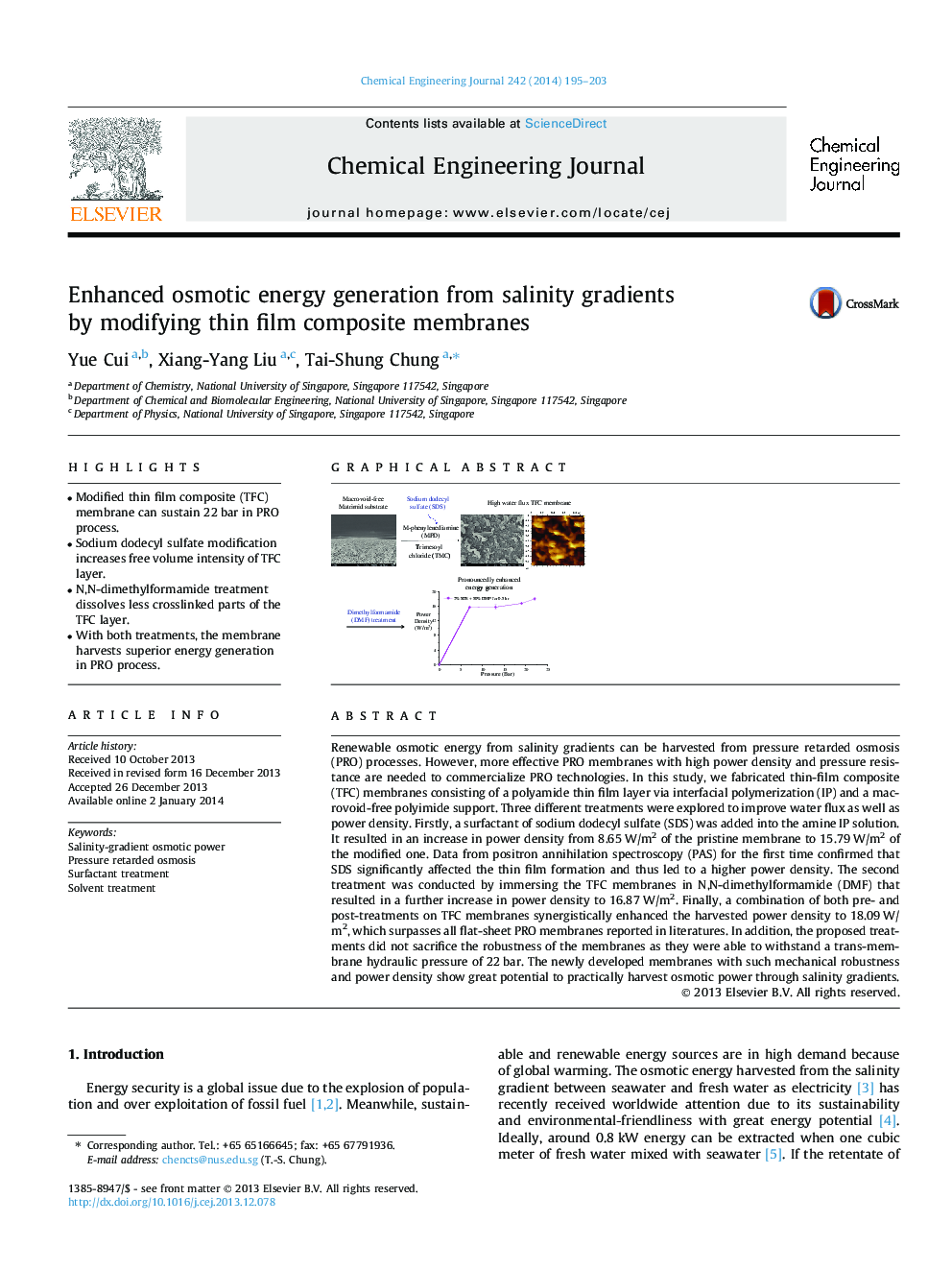| Article ID | Journal | Published Year | Pages | File Type |
|---|---|---|---|---|
| 147638 | Chemical Engineering Journal | 2014 | 9 Pages |
•Modified thin film composite (TFC) membrane can sustain 22 bar in PRO process.•Sodium dodecyl sulfate modification increases free volume intensity of TFC layer.•N,N-dimethylformamide treatment dissolves less crosslinked parts of the TFC layer.•With both treatments, the membrane harvests superior energy generation in PRO process.
Renewable osmotic energy from salinity gradients can be harvested from pressure retarded osmosis (PRO) processes. However, more effective PRO membranes with high power density and pressure resistance are needed to commercialize PRO technologies. In this study, we fabricated thin-film composite (TFC) membranes consisting of a polyamide thin film layer via interfacial polymerization (IP) and a macrovoid-free polyimide support. Three different treatments were explored to improve water flux as well as power density. Firstly, a surfactant of sodium dodecyl sulfate (SDS) was added into the amine IP solution. It resulted in an increase in power density from 8.65 W/m2 of the pristine membrane to 15.79 W/m2 of the modified one. Data from positron annihilation spectroscopy (PAS) for the first time confirmed that SDS significantly affected the thin film formation and thus led to a higher power density. The second treatment was conducted by immersing the TFC membranes in N,N-dimethylformamide (DMF) that resulted in a further increase in power density to 16.87 W/m2. Finally, a combination of both pre- and post-treatments on TFC membranes synergistically enhanced the harvested power density to 18.09 W/m2, which surpasses all flat-sheet PRO membranes reported in literatures. In addition, the proposed treatments did not sacrifice the robustness of the membranes as they were able to withstand a trans-membrane hydraulic pressure of 22 bar. The newly developed membranes with such mechanical robustness and power density show great potential to practically harvest osmotic power through salinity gradients.
Graphical abstractFigure optionsDownload full-size imageDownload as PowerPoint slide
